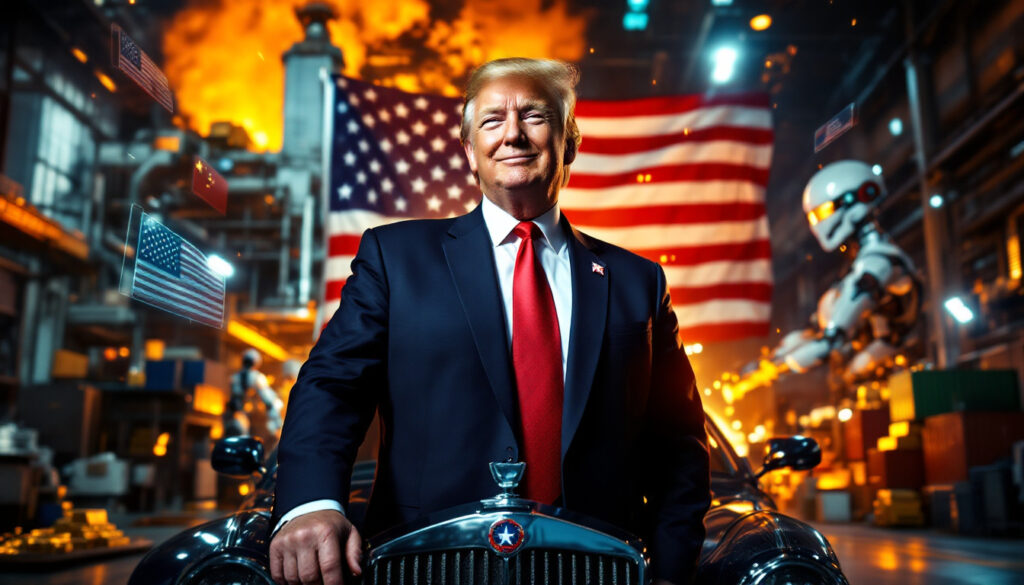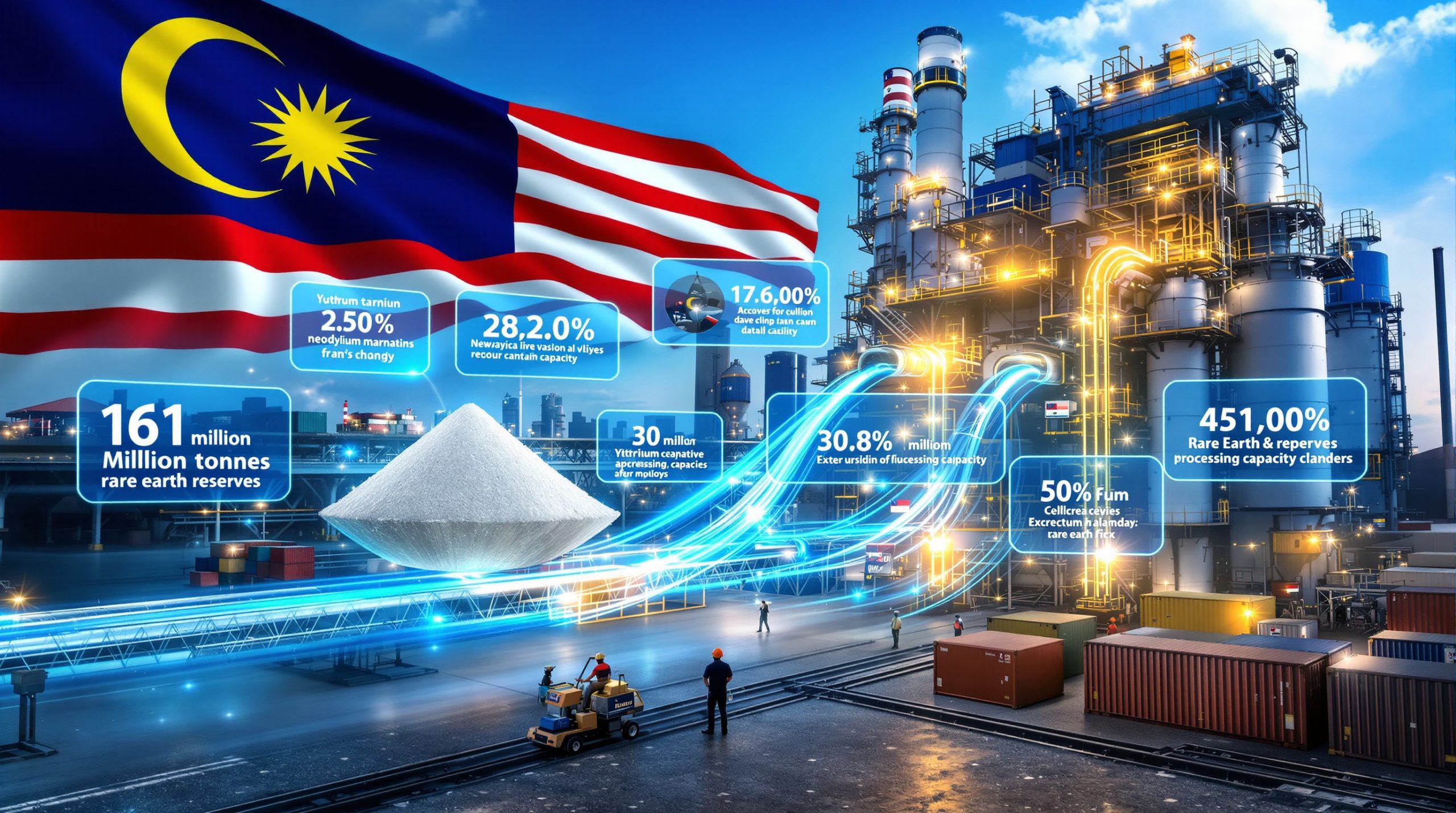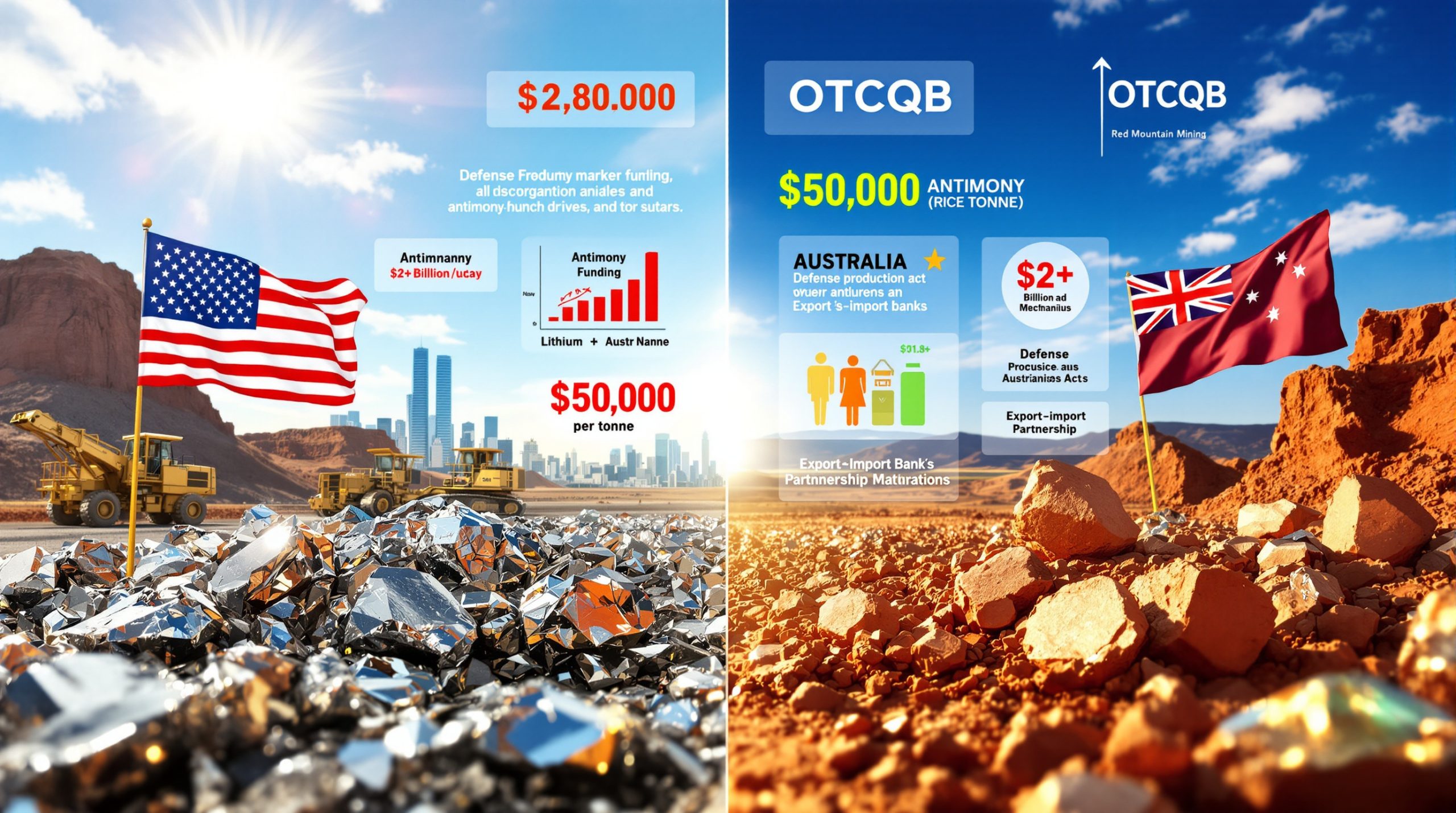Trump's Tariffs and Implementation
Trump's Consistent Policy Approach
Trump has maintained remarkable consistency between campaign promises and actual policy implementation regarding tariffs. These trade measures align perfectly with his pre-election statements about rebuilding American manufacturing and prioritizing national economic interests. Unlike many politicians who shift positions after taking office, Trump's tariff policy represents a deliberate strategic vision rather than arbitrary decision-making.
Strategic Objectives Behind the Tariffs
The Trump administration's tariffs are anchored in a comprehensive strategy to rebuild American manufacturing capacity after decades of decline. The Department of Defense has specifically highlighted how the hollowing out of domestic industrial capacity over 40 years represents a serious national security vulnerability. These concerns aren't merely economic but existential, with military officials warning that critical supply chains dominated by potential adversaries could leave America vulnerable during conflicts.
"Manufacturing capability isn't just about jobs – it's about military readiness," notes security analysts familiar with Pentagon assessments. The tariffs target industries where America has become dangerously dependent on foreign production, particularly from China, which views industrial dominance as a strategic objective.
Key Industries Targeted by Tariffs
The focus on steel and aluminum illustrates the strategic nature of Trump's energy policies. These materials are essential for everything from aircraft carriers to missiles. Automotive manufacturing receives similar attention because modern factories can be rapidly converted to produce military vehicles and equipment during national emergencies – a capability America has historically relied upon during major conflicts.
The targeting of industries where China has made global domination a strategic priority isn't coincidental. Chinese government initiatives like "Made in China 2025" explicitly aim to dominate advanced manufacturing sectors critical to both economic and military power. Trump and tariffs represent a direct counter to these ambitions.
How Will Trump's Tariffs Impact the US Economy?
Short-Term Economic Challenges
Current economic indicators suggest the US is facing significant headwinds that could be exacerbated by tariff implementation. Supply chain metrics show disruptions approaching levels not seen since the height of the COVID pandemic, with companies scrambling to reconfigure sourcing strategies. This volatility creates uncertainty that typically suppresses business investment in the short term.
Market data shows turbulence in sectors most affected by tariffs, with price increases for imported goods already beginning to appear. Consumer sentiment surveys indicate growing concern about purchasing power as these costs are passed along. The timing is particularly challenging as many economists already detect recessionary signals in leading indicators.
Long-Term Economic Strategy
The administration's approach combines tariffs with countervailing measures designed to stimulate domestic growth. Deregulation efforts targeting federal restrictions on manufacturing and resource extraction aim to reduce compliance costs that have made domestic production uncompetitive. Tax cuts focused on capital investment provide incentives for building new production facilities within US borders.
This strategy essentially creates economic pressure and opportunity simultaneously – making imports more expensive while making domestic production more profitable. Energy policy forms a crucial component, with expanded domestic production designed to lower input costs for manufacturing. The overall approach represents a dramatic shift from decades of globalist economic orthodoxy toward nationalist industrial policy.
Impact on Energy Markets
OPEC's traditional ability to control global oil prices has diminished significantly as US production has surged. Analysis suggests oil prices could trend toward $50/barrel in the absence of major Middle East conflicts, creating a more stable cost environment for energy-intensive industries. This reflects the administration's energy philosophy: "bullish for supply, bearish for price."
The long-term implications for energy costs in real terms point toward sustained lower prices, creating a potential competitive advantage for US manufacturing. This combination of energy abundance and tariff protection creates conditions potentially favorable for industrial revival, particularly in regions previously devastated by manufacturing job losses.
What Are the Geopolitical Implications of Trump's Tariff Policy?
US-China Relations
Trump's tariffs represent perhaps the most significant challenge to China's economic strategy since its rise as a manufacturing power. Pentagon assessments have bluntly concluded that "the US would lose a war with China today" given current military capabilities and supply chain vulnerabilities. This stark reality drives the urgency behind industrial policy that treats economic and national security as inseparable.
China is viewed within administration circles as the "single greatest threat to US global economic dominance," with tariffs forming just one component of a broader competitive strategy. The policy deliberately targets critical supply chain dependencies, particularly in sectors with dual civilian-military applications. The impact of China export restrictions seeks to prevent scenarios where China could leverage economic interdependence for geopolitical advantage during crises.
Impact on International Alliances
The administration's approach to allies has been characterized as a "Mafia-style loyalty test" that demands concrete demonstrations of alignment rather than rhetorical support. NATO partners face unprecedented pressure to increase defense spending to meet commitments, with tariffs serving as potential leverage against countries that resist.
This transactional approach to alliances reflects a fundamental reassessment of America's global role. European countries find themselves caught between competing major powers, with energy dependence on Russia complicating their response to American pressure. Traditional alliance structures built during the Cold War era are being stress-tested by economic nationalism that prioritizes bilateral deals over multilateral frameworks.
Russia-China Collaboration
Intelligence assessments characterize the war in Ukraine as a "geopolitical catastrophe for the Atlantic Alliance" that has accelerated Russia-China strategic alignment. Documentation shows unprecedented levels of intelligence and technology sharing between these powers, creating a formidable axis of opposition to Western influence.
Russia's economy has demonstrated surprising resilience despite sanctions, becoming more self-sufficient in critical sectors. This example suggests that resource-rich nations can withstand economic isolation better than previously assumed, potentially emboldening China to risk similar confrontation. The tariff policy needs to be understood within this broader context of great power competition that extends beyond purely economic considerations.
How Are Global Financial Markets Responding to Trump's Tariffs?
Gold as a Safe Haven Asset
Gold has reached historic highs measured in dollars, reflecting growing uncertainty about traditional financial assets. Central banks globally have dramatically increased gold reserves, with countries like Saudi Arabia adding substantial positions. Gold miners are beginning to see price appreciation after years of underperformance, suggesting a fundamental shift in market sentiment.
Market analysis indicates gold remains "wildly underowned" in institutional and retail portfolios despite recent gains. This suggests potential for continued upward momentum as investors seek protection from both inflation and geopolitical instability. The renewed interest in gold market analysis represents a broader questioning of fiat currency systems that have dominated since the end of the Bretton Woods era.
Dollar Strength Concerns
The re-industrialization strategy may paradoxically require a weaker dollar to succeed, creating tension with traditional Republican support for currency strength. Gold price increases reflect underlying dollar concerns among international investors and central banks. Numerous nations are actively seeking alternatives to US dollar-based systems for international trade, potentially accelerating de-dollarization trends already underway.
This currency dimension adds complexity to the tariff strategy, as a strong dollar makes imports cheaper and exports more expensive – the opposite of what tariffs aim to achieve. The administration faces difficult trade-offs between maintaining dollar hegemony and revitalizing domestic manufacturing.
Market Sector Impacts
Energy equities face significant headwinds despite increased production volumes, as price pressures weigh on profitability. Manufacturing and domestic production sectors potentially stand to benefit substantially from tariff protection, particularly companies with established US production capacity. The defense industry likely will see increased investment as military readiness concerns drive procurement.
Traditional safe havens like bonds haven't performed as expected during recent market turbulence, forcing investors to reconsider conventional risk management strategies. This realignment of market sectors creates both opportunities and risks for investors trying to position portfolios for the tariff era. For a deeper understanding, recent global commodities insights highlight how political dynamics are reshaping investment landscapes.
What Is the "Department of Government Efficiency" (DOGE) Initiative?
DOGE's Objectives and Challenges
Initial claims of potential savings of $400 billion through efficiency improvements have been scaled back to a more realistic $150-300 billion range as implementation realities emerge. The initiative targets waste, fraud, and inefficiency in federal programs that have grown exponentially over decades. Elon Musk's involvement has become less prominent over time as the practical challenges of government reform become apparent.
Political resistance to cutting popular programs despite documented inefficiencies remains the greatest obstacle to meaningful reform. Historical precedent suggests that inertia and bureaucratic self-preservation typically defeat even well-designed efficiency initiatives. The administration faces a fundamental tension between populist promises to protect entitlements and fiscal conservative goals of reducing government size.
Practical Reform Proposals
Requiring reapplication for benefits represents a straightforward approach to eliminating fraud, as studies suggest significant percentages of recipients may no longer qualify under program guidelines. Offering buyouts for a fraction of the net present value of benefits could reduce long-term liabilities while providing immediate value to beneficiaries.
Zero-based budgeting approaches to government spending force programs to justify their existence rather than assuming automatic continuation. Technology solutions to verify legitimate benefit recipients could dramatically reduce improper payments in major entitlement programs. These practical measures avoid politically dangerous direct benefit cuts while still improving fiscal sustainability.
Political Realities of Government Reform
Polarization has made rational policy discussion increasingly difficult, with reform proposals automatically attacked as politically motivated regardless of merit. Resistance comes not just from beneficiaries but from the entire ecosystem of contractors, administrators, and support industries that profit from current spending patterns.
Historical precedent from the Reagan era demonstrates how reform efforts are typically derailed by political backlash once specific cuts are proposed. The challenge of maintaining political support for spending reductions becomes exponentially more difficult as programs mature and constituencies organize to protect them. This political reality explains why efficiency initiatives rarely achieve their stated objectives despite widespread agreement about waste in government.
FAQ About Trump's Tariffs and Economic Policy
Are Trump's tariffs primarily targeting China?
While China is a major focus due to its strategic competition with the US, Trump has implemented tariffs on multiple countries including traditional allies. The policy aims to rebuild American manufacturing capacity broadly rather than simply addressing a single trading partner. China receives particular attention because it presents both economic and national security challenges through its industrial policies and military expansion.
Will tariffs cause inflation in the US?
Tariffs will likely cause some short-term price increases as import costs rise, but the administration is betting that countervailing factors will mitigate inflationary pressures. Deregulation, tax cuts, and increased domestic production are designed to offset these effects by reducing compliance costs and stimulating supply-side growth. According to recent IMF forecasts, the energy dominance strategy specifically aims to keep input costs low for manufacturing, potentially counterbalancing inflationary pressures from import restrictions.
How will tariffs affect US relations with allies?
Trump is using tariffs as negotiating leverage with allies, particularly regarding defense spending and trade balances. This transactional approach creates tension within traditional alliances but potentially yields concrete concessions rather than symbolic gestures. The administration views previous trade arrangements as disadvantageous to American interests and is willing to accept diplomatic friction to achieve economic objectives. This represents a fundamental shift from post-WWII consensus on alliance management toward a more nationalist approach.
What industries are most likely to benefit from tariffs?
Domestic manufacturing in strategic sectors like steel, aluminum, and automotive production stand to gain significantly from tariff protection. Companies involved in defense manufacturing and critical supply chains will likely see increased investment as national security priorities drive procurement decisions. Energy production will continue expanding under favorable regulatory conditions, though price pressures may limit profitability. Industries that have maintained domestic production capacity during the offshoring era are particularly well-positioned to capitalize on the changing trade environment.
How do tariffs fit into Trump's broader economic strategy?
Tariffs represent one component of a comprehensive approach that includes federal government reduction, deregulation, tax cuts, and energy dominance. The overall goal integrates economic and national security objectives by rebuilding American manufacturing capacity while reducing dependencies on potential adversaries. This strategy explicitly rejects globalist economic orthodoxy in favor of nationalist industrial policy that prioritizes domestic production over theoretical efficiency gains from comparative advantage. The approach represents the most significant deviation from post-Cold War economic consensus in generations, with many analysts developing new investment strategies to navigate this changing landscape, as economists warn about potential market disruptions.
Ready to Catch the Next Big Mineral Discovery?
Don't miss potentially life-changing ASX mineral discoveries – learn how Discovery Alert's proprietary Discovery IQ model delivers instant, actionable alerts on significant finds before the broader market reacts. Visit the dedicated discoveries page to see how historic mineral discoveries have generated substantial returns for early investors.




